Are you needing spring vegetable garden ideas? As the chilly days start to warm up and the birds sing a little louder, you know the time is getting close. Spring gardening season is upon us!
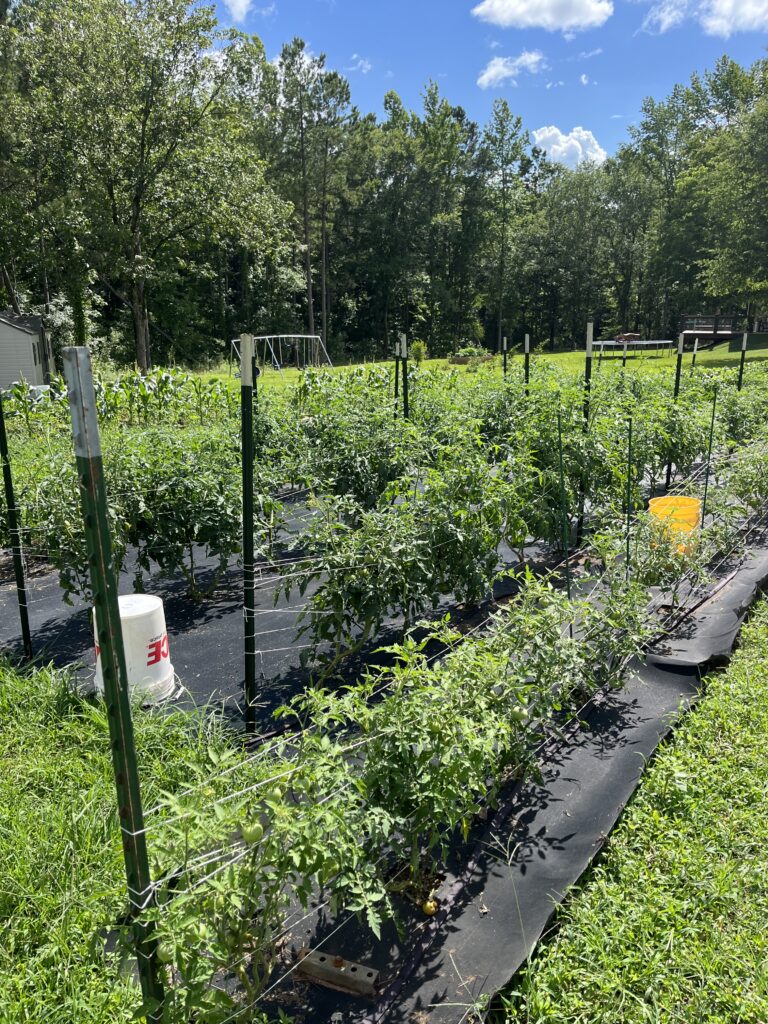
I’m going to share a variety of spring vegetable garden ideas tailored to different growing zones, from cold climates to warm ones. I’ll also discuss the importance of knowing your zone and selecting vegetables, like choosing hardy greens for colder zones and heat-loving crops for warmer ones. With these helpful tips, I hope to inspire you to embark on a gardening journey and enjoy plenty of homegrown produce this spring.
Growing Zones
Let’s talk about growing zones. You might have heard about them before, but in case you haven’t, growing zones are like little maps that tell you what plants will thrive best in your area based on climate and temperature patterns.
Check out these spring vegetable garden ideas tailored for different growing zones!
Zone 3-4:
If you’re living in Zones 3 or 4, you’re probably used to some pretty frosty springs. But there are still veggies you can grow! Think of hardy and frost-resistant plants like spinach, kale, carrots, and radishes. Here in the deep south, our favorite cold hardy plants are turnips and collards. These tough little guys can handle the cold and will give you some delicious greens early in the season.
Zone 5-6:
Zones 5 and 6, your spring garden is going to start popping soon! These zones have a little bit more warmth to play with, so you can start sowing seeds for peas, lettuce, onions, and beets. These veggies love the cool spring weather and will be feeding you in no time.
Zone 7-8:
Zones 7 and 8! This is my growing zone and they have some prime growing conditions for a wide variety of veggies. As the weather warms up, it’s time to start planting tomatoes, cucumbers, peppers, and squash. These growing zones allow for spring planting to begin in late March and Early April. I start lettuces, carrots, broccoli, and cabbages in late February in my zone 8 climate.
Zone 9-10:
In growing zones 9 and 10 spring feels more like a teaser for summer. If you’re in these warmer zones, you can get a head start on summer crops like beans, corn, melons, and eggplant. Just keep an eye on the heat and make sure your plants stay hydrated during those sunny days.
No matter which zone you’re in, there’s something magical about planting seeds and watching them grow.
Not sure about your growing zone? The growing zones have recently been updated. Check out the USDA Plant Hardiness Zone Map for more information.
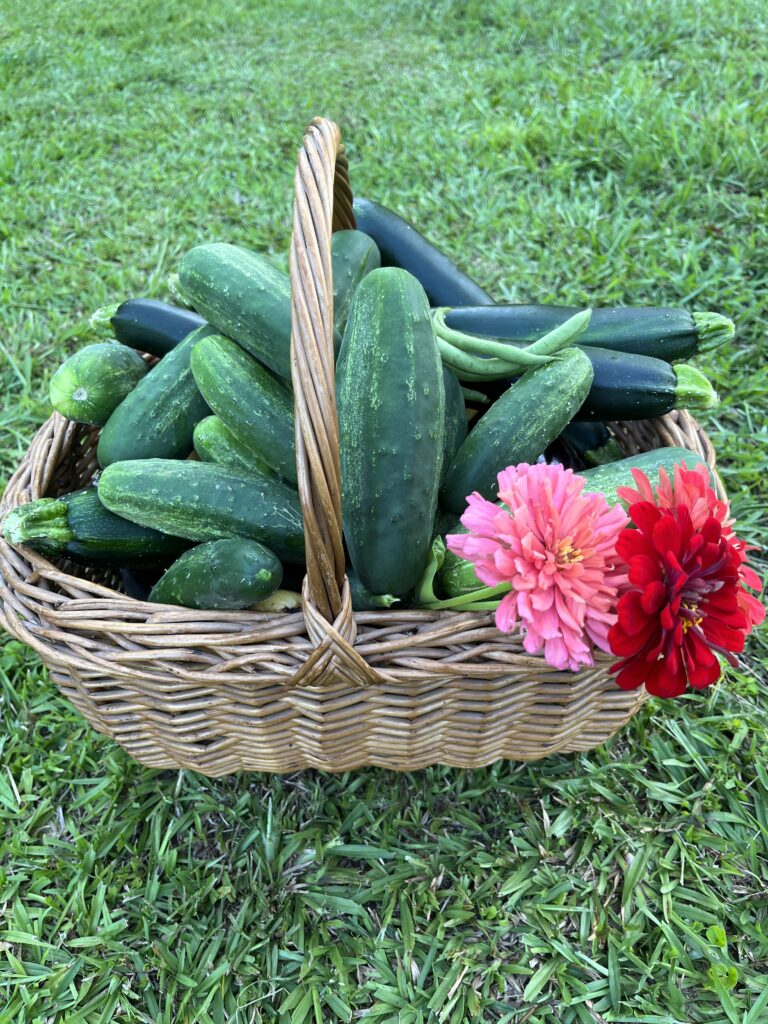
10 Spring Vegetable Garden Ideas You Have To Check Out!
- Early Spring Vegetables
- 15 Best Vegetables To Plant In Spring
- What to Plant In Spring
- The Ultimate Guide To The Best Vegetables To Plant In Spring
- 27 Spring Vegetable Plants Perfect For Spring Growing Season
- Spring Planting
- A Beautiful Veggie Garden? You Can Grow That!
- Who Says A Kitchen Garden Can’t Be Beautiful?
- Ideas for Cheap Raised Beds
- 6 Ways To Create A Beautiful Spring Garden
More Spring Plants To Consider
Here are some more options to consider planting in your spring garden, regardless of your growing zone:
Herbs:
Who doesn’t love fresh herbs to sprinkle on their dishes? Planting herbs like basil, parsley, cilantro, and mint can add flavor to your meals. They’re also relatively easy to grow and don’t take up too much space, making them perfect for backyard gardening.
Root Vegetables:
Spring is the perfect time to plant root veggies like potatoes, carrots, and beets. These hearty crops love the cool weather and can be harvested throughout the summer and fall. Plus, there’s something so satisfying about pulling up a carrot straight from the earth!
Salad Greens:
If you’re a fan of fresh salads, why not grow your own greens? Lettuce, arugula, spinach, and kale are all excellent options for spring planting. They grow quickly and can be harvested multiple times throughout the season, ensuring a steady supply of leafy goodness for your salads and sandwiches.
Peas and Beans:
Peas and beans are not only delicious but also great for adding nitrogen back into the soil. Snap peas, snow peas, and green beans are all perfect for spring planting. Just keep in mind that some varieties need a trellis or some support as they grow, and they’ll reward you with a bountiful harvest.
Tomatoes and Peppers:
While they might need a little extra care and attention, tomatoes and peppers can be worth the effort. Start them indoors a few weeks before the last frost date in your area, and transplant them into your garden once the weather warms up. Be sure to research different varieties and choose the one that best suits your growing zone.
Squash and Pumpkins:
If you’ve got some space to spare, consider planting squash and pumpkins in your spring garden. These vines love the warmth of spring and will reward you with an abundant harvest come autumn. Just make sure to give them plenty of room to spread out and watch out for squash bugs! I check my squash daily to keep them in check.
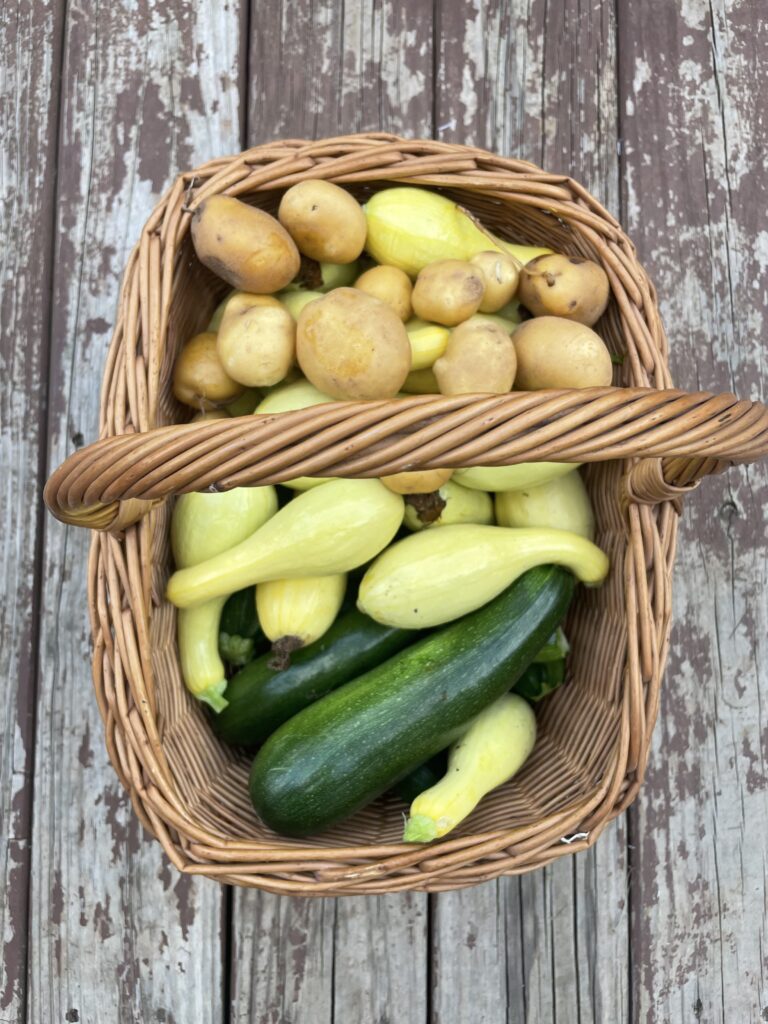
Here’s a list of helpful tips to ensure your spring vegetable garden thrives:
Know Your Growing Zone:
- Understand your growing zone and choose vegetables that thrive in your specific climate and temperature conditions.
Start with Good Soil:
- Invest in quality garden soil or amend your existing soil with compost to ensure your plants have the nutrients they need to grow healthy and strong.
Plan Your Layout:
- Sketch out a garden layout before planting to maximize space and ensure proper sunlight exposure for each vegetable. Check out my previous post on how to plan a garden
Plant at the Right Time:
- Pay attention to planting schedules for each vegetable and sow seeds or transplant seedlings at the right time based on your local frost dates.
Water Wisely:
- Water your garden deeply and consistently, making sure to water the roots rather than the foliage to prevent disease.
Mulch for Moisture and Weed Control:
- Apply mulch around your plants to help retain moisture in the soil and suppress weed growth. Organic materials like straw, shredded leaves, or grass clippings work well.
Practice Companion Planting:
- Take advantage of companion planting techniques to naturally deter pests.. For example, planting marigolds alongside tomatoes can help repel harmful insects.
Learn from Experience:
- Don’t be afraid to experiment and learn from your successes and failures in the garden. Goodness, I’ve made (and continue to make) plenty of mistakes along the way. It honestly keeps gardening challenging and fun!
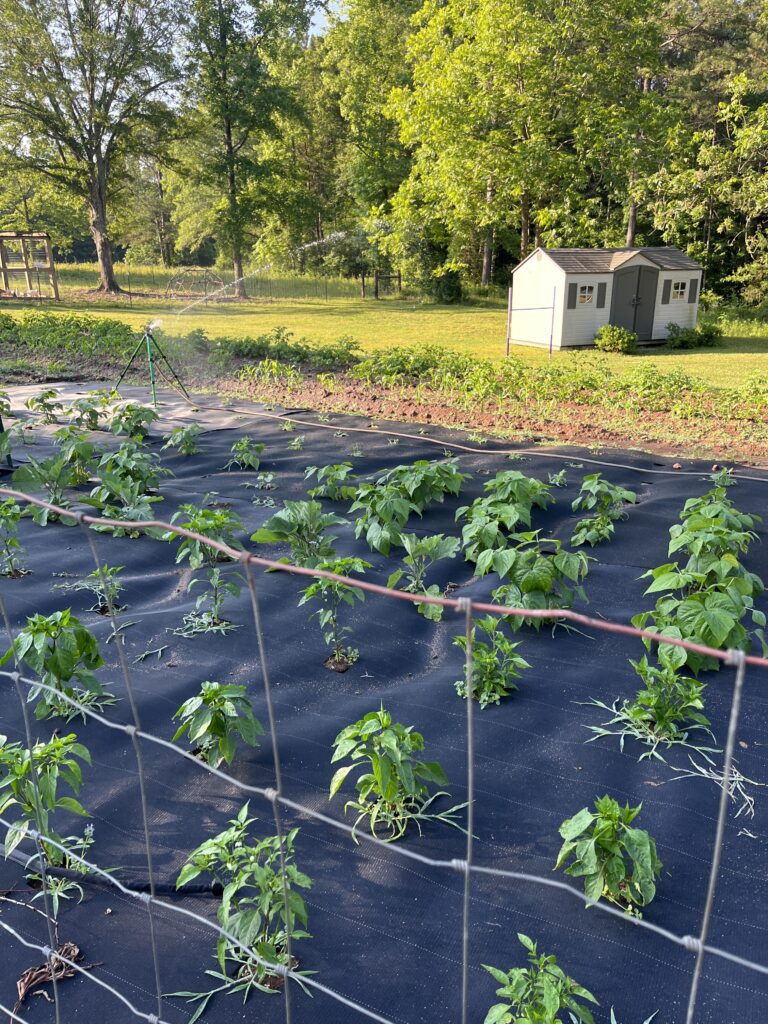
***This post may contain affiliate links which means I make a small commission at no extra cost to you. Read my full disclosure here.*
Spring Gardening Tools
You don’t necessarily need a lot of tools for a successful garden. However, the right tools sure make the job easier. Here’s a list of my favorite gardening tools that make maintaining my beds a breeze.
Hand Trowel: A hand trowel is a small, handheld tool with a pointed blade that’s perfect for digging small holes for planting seeds and transplanting seedlings. I use it daily in my garden.
Garden Fork or Spade: A garden fork or spade is essential for turning over soil, breaking up clumps, and mixing in compost or other amendments.
Garden Hoe: A garden hoe removes weeds and cultivates the soil. It has a flat blade that can be pushed or pulled through the soil to break up weeds.
Garden Rake: A garden rake is used to level soil, spread mulch, and remove debris from your garden beds. It typically has sturdy tines that can handle a variety of tasks.
Watering Can or Hose: Proper watering is crucial for the health of your plants. Whether you prefer a traditional watering can or a garden hose with a nozzle attachment, make sure you have a reliable way to water to your garden beds. I love using a soaker hose in my garden to deliver water directly to my plant’s roots.
Pruning Shears: Pruning shears, also known as secateurs, are used to trim and shape plants, remove dead or damaged branches, and harvest fruits and vegetables.
Garden Gloves: Protect your hands from thorns, prickly plants, and blisters with a sturdy pair of garden gloves.
These are just a few of the essential tools you might need to plant and maintain a garden. Depending on the size and scope of your garden, you may also want to consider additional tools.
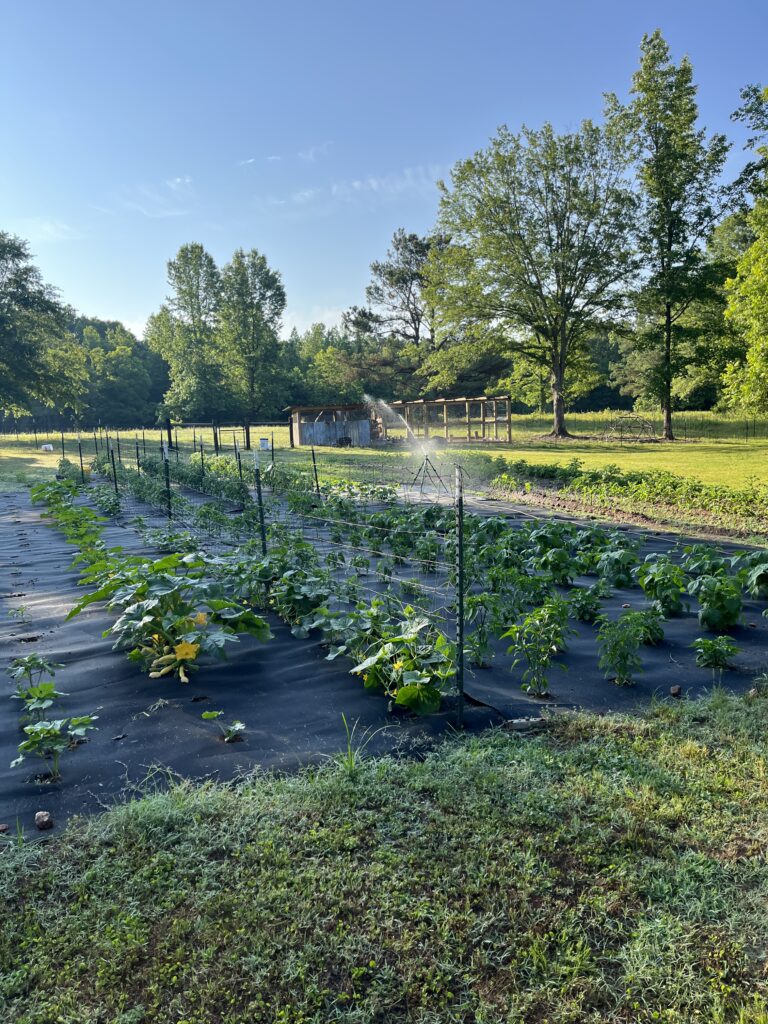
Spring Garden FAQs
When should I start planting my spring vegetable garden?
The timing for planting your spring vegetable garden depends on your climate and frost dates. In general, you can start planting cool-season vegetables like lettuce, spinach, and peas as soon as the soil can be worked and the danger of frost has passed. For warm-season vegetables like tomatoes and peppers, wait until nighttime temperatures consistently stay above 50°F (10°C).
How often should I water my spring vegetable garden?
It’s important to keep your vegetable garden moist, especially during the germination and early growth stages. Water your garden deeply and regularly to provide about 1-1.5 inches of water per week. Adjust watering based on rainfall.
What is the best way to control weeds in my spring vegetable garden?
Mulching is one of the best ways to control weeds in your garden. Apply a layer of organic mulch, such as straw, woodchips, or shredded leaves, around your plants to cut down on weed growth and conserve soil moisture. Regularly hand-pulling weeds as soon as you see them can also help keep them in check.
How can I protect my spring vegetable garden from pests and diseases?
There are several strategies you can use to prevent pests and diseases in your garden. Practice crop rotation to interrupt pest life cycles and avoid planting the same vegetables in the same spot year after year. Keep your garden clean and tidy, remove plant debris, and quickly get rid of any diseased plants. You can consider using natural pest control methods like companion planting and beneficial insects.
How do I know when my spring vegetables are ready to harvest?
The best way to determine when your spring vegetables are ready to harvest is to check for ripeness based on each plant’s specific characteristics. Harvest leafy greens like lettuce and spinach when the leaves are large enough to eat but before they bolt. For root vegetables like carrots and radishes, gently pull one from the ground to check its size.
Final Thoughts
I hope these spring vegetable garden ideas inspired you to ahead and get started on planting! Don’t be afraid to experiment and try new things. I often plant different vegetable varieties just to see how they perform. As you gain experience and experiment with different plants and techniques, you’ll discover even more knowledge about successful gardening practices.
To keep track of all your gardening activities, check out my FREE Garden Planner!
If you enjoyed this gardening article, please share it! Thanks for visiting my farm.

Leave a Reply